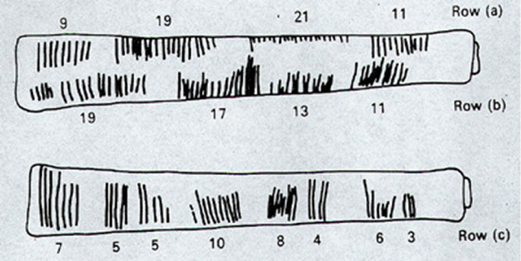Maths Anxiety
Maths anxiety is about the way we feel when faced with everyday mathematical problems, for example adding up shopping; splitting the bill in a restaurant; or working out how much flour to put in a cake recipe. It’s not about ability in mathematics, one could be highly competent but struggle with the most basic mathematics. David Robson, writing for bbc Future is a good example of this, he says:
“I have a university degree … in mathematics. Yet somehow, advanced calculus in the privacy of my own room was a breeze compared to simple arithmetic under the gaze of others – or even remembering my building’s security code.”
You could not possible claim that he is ‘bad’ at maths, but he struggles with very basic mathematics, why? Maths anxiety was researched in Stanford University, where was shown that then people with maths anxiety are exposed to mathematics, their brains react in the same way as a person who had a phobia would react to seeing their phobia. We should take from this that maths anxiety is not about ability, it’s not a label for people who struggle academically. It goes deeper than that, just as you would not chase an arachnophobic person with a spider to cure them, you cannot throw mathematics in a high-pressure situation at a person with maths anxiety as it will not help.
Something that we should also be aware of is that girls may be more likely to occur in girls, especially if their teacher is also female. Even in my own experience, women are more likely to shy away from mathematics, however the Department of Empirical Educational Research, University of Konstanz found in a study that girls did have more maths anxiety than the boys, but that both had similar abilities when tested.
What can we do about maths anxiety? One suggested method is to have pupils with maths anxiety write about their fears, the idea being that they can see their feelings about it written down and not see them as insurmountable. It is also thought that pupils should be taught to approach mathematics in a completely different way. David Robson suggests looking at maths more as a challenge than a problem, to try to do it and not be put off because its maths.
As a teacher, we should remember that children will pick up on the way that we feel about maths. If we act as if we are nervous or scared by maths, then children will think that there is something to be scared of, which there is not. They also may not fully trust us to teach them properly and they may not get as much out of the lesson as they should. I think that teaching style may be important here, making sure to spot any pupils who may have maths anxiety and giving them the necessary support, allowing them to work through mathematics, without any need to be anxious.
I decided that I would find out for myself if I have maths anxiety, the test I used gave 10 questions and I had to rate how much I agreed on a scale of 1-5. The results suggested that I am ‘fearful’ about maths but not that I have maths anxiety. This is useful to be aware of, as I would hate to pass such fear on, and it is part of the reason I am taking this module. I think that
Goetz T, Bieg M, Lüdtke O, Pekrun R, Hall NC(2013) Do girls really experience more anxiety in mathematics?. Available at: http://www.ncbi.nlm.nih.gov/pubmed/23985576 (Accessed: 14 October 2015)
Robson, D (2015) Do you have ‘maths anxiety’?. Available at: http://www.bbc.com/future/story/20150619-do-you-have-maths-anxiety (Accessed: 14 October 2015)
Freedman, E (2006) Do You Have Math Anxiety? A Self Test. Available at: http://www.pearsoncustom.com/mdc_algebra/math_anxiety_material.pdf (Accessed: 14 October 2015)
www.theguardian.com/education/2012/apr/30/maths-anxiety-school-supportBrian, K (2012) Maths anxiety: the numbers are mounting. Available at: http://www.theguardian.com/education/2012/apr/30/maths-anxiety-school-support (Accessed: 14 October 2015)















